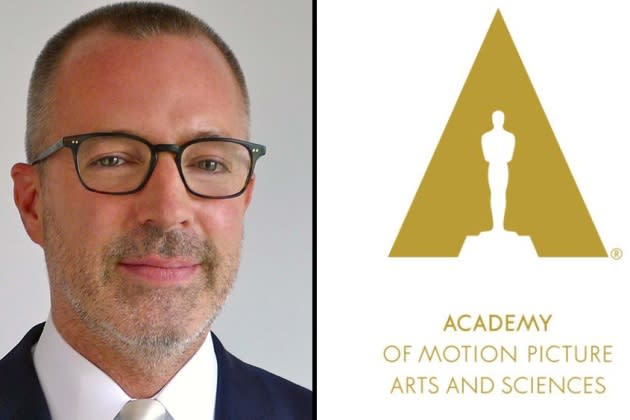In The Financial Details, New Reality And A Little Turmoil At The Film Academy

The big picture was clear enough in the fiscal 2022 financial report released by the Academy of Motion Picture Arts and Sciences last Tuesday: Income down, expenses up, rough going overall in a tough financial climate.
But the finer points take a little digging, both in and around the 39-page report.
More from Deadline
On closer inspection, and with some help from people who know their way around the numbers—Academy officials, for their part, have declined comment—an observer sees signs of turmoil, and the outlines of a profound transition from a simple, Oscar-granting institution to a complicated cultural enterprise fronted by an expensive movie museum.
As for turmoil, there clearly was some around a $12.3 million “loss on asset disposal” recorded on Page 5 of the report. Only marginally helpful, a corresponding footnote said the amount represented “exhibit development costs” for property, equipment and building improvements that, it was determined, “would not be utilized in the museum.”
But according to those people who know their way around, the write-off was entangled with the departure of Kerry Brougher as director of the Academy Museum in August of 2019, and the subsequent hiring of Bill Kramer—now chief executive of the Academy itself—to fill his post. A fair amount of the write-off resulted from false starts on a number of proposed projects between 2016 and 2019, as costly consultants from around the world wrestled with the challenge of building concrete exhibits around a medium as ephemeral as film. But the biggest hits came from the abandonment of two Brougher-era exhibits. One of those was a Japanese-designed ‘immersive experience,’ only loosely tied to the movies, which would have lived in space now occupied by a giant North By Northwest display, and the other was a walk-through replica of Dorothy’s Wizard Of Oz house, which was deemed unauthentic, too theme park-like, and too low-capacity for the museum.
Subtler issues lie behind the sharp decline in “grants payable”—to about $1 million from $1.5 million a year earlier—as reported on Page 3. As Covid brought austerity, the Academy in early 2021 disclosed that it was suspending its FilmWatch and FilmCraft grants. But as the months unfolded, officials also decided to change the dynamic of Academy support for outside institutions. Rather than writing checks to film schools, for instance, as had sometimes been done in the past, “giving” has been shifted toward collaborative efforts—perhaps shared programs, or the use of screening facilities–involving the museum’s educational arm. In theory, support for others won’t diminish. But it may be somehow folded into the museum operation.
One shock-change: Advertising expense nearly tripled in 2022, to $10.8 million from $3.7 million a year earlier. The spending was split between the Oscar show, which had an enhanced promotional budget, and the museum, which had a certain amount of one-time cost linked to its opening in September of 2021. Total ad spending may drop a bit this year; still, according to those people who know, large advertising budgets are likely to be a permanent feature, as the museum seeks to showcase new exhibits and the Oscar show fights for viewers.
The new reality also brings higher fundraising costs. In 2022, those took a startling leap, to $8.5 million from $4.1 million a year earlier. Look for that much or even more spending in the future, as the Academy—which once lived almost entirely on Oscar-show revenue—looks to shore up its finances with increasingly aggressive fund-raising programs.
A core issue that can be only vaguely tracked in the current financial report is the extent to which the museum will require donor support to supplement its earned revenue from admissions, screening and merchandise sales. In 2022, the gap between expense and earned income was almost $39 million, after eliminating noncash depreciation expense, which doesn’t affect the money in hand. That reflected just nine months of museum operation during the fiscal year; but it also included a one-time expense bulge of unknown size, related to the museum’s September opening.
Calculating museum earned income and expense going forward involves plenty of guesswork. But a reasonable guesstimate, based on the reported numbers, might say that the museum will have about $50 million cash operating expense in a normal year, after reaching $62.4 million for just nine months last year, thanks to the one-time cost of opening.
At the same time, earned revenue might recede a bit, after reaching $23.7 million for just nine months last year, as the initial excitement of opening and first-time visitors burn off. But combined income from museum sales and regular contributions from embedded partners, including the museum’s own wealthy trustees, would provide income of perhaps $40 million. That would leave a gap of around $10 million annually, to be filled by the Academy itself or new donors (remembering, again, the increased cost of fundraising).
The specifics are just a guess. But the need for more cash going forward is a near certainty. For the film Academy and its museum, that’s the new fiscal reality.
Best of Deadline
Sign up for Deadline's Newsletter. For the latest news, follow us on Facebook, Twitter, and Instagram.

